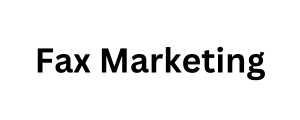Traditional ERP systems lik, Navision , and are powerful tools for business management. However, their rigidity and complexity can be a significant barrier for many companies.
Here we break down the customization challe Bitcoin Data nges these ERPs face and how a flexible solution can offer you crucial advantages.
Problems with customizing standard ERPs
1. SAP:
- ABAP Development Language : SAP uses its own language, ABAP (Advanced Business Application Programming), which requires specialized knowledge. Hiring ABAP developers can be expensive, and the learning curve for your existing team can be steep.
- Consulting Costs : Customizing SAP often involves hiring external consultants, which can add substantial costs to your budget.
- Integration Complexity : Integrating SAP with other systems can be complex and often requires additional middleware and solutions, increasing both technical complexity and cost.
2. Odoo:
- Python Modifications : Although Odoo is more accessible thanks to its use of Python , customizations may require deep knowledge of the Odoo framework. This may result in longer development time and higher costs if you need external help.
- Conflicting Updates : Every time Odoo is updated, customizations may break, requiring adjustments or code rewrites to maintain functionality.
- Additional Modules : The need for multiple modules to cover different aspects of the business can complicate data management and integration.
3. Navision (Dynamics NAV):
- C/AL and AL Language : Customization in Navision involves the use of specific languages such as C/AL or the new AL for Dynamics 365 Business Central. This requires specialized skills and a good understanding of the
Is your ERP holding you back? Explore more flexible solutions for your business
Microsoft development environment.
- High Licensing Cost : Navision licenses can be expensive, especially when you need access to additional modules to cover all your business needs.
- Implementation Time : Navision can take considerable time to configure and customize, delaying time to value.
4. Microsoft Dynamics 365 Business Central:
- AL Environment and Extensions : Although more modern than Navision, Business Central also uses AL for customizations. Transitioning from legacy systems to cloud extensions can be complex and resource intensive.
- Customization Costs : Customizations often require specialized developers and may involve ongoing costs to maintain and update the modifications.
- Update Compatibility : Regular Microsoft updates may cause incompatibilities with customizations, requiring ongoing adjustments to maintain system stability.
Advantages of a flexible solution
1. Total Adaptability:
- Customize Every Aspect : Rather than tailoring your business to fit the system, a flexible solution allows the system to adjust to your specific processes. You can change business rules, workflows, and data structures without the headaches of standard platforms.
- Less Dependence on Consultants : The simplicity and accessibility of the system reduces the need for external consultants, which lowers costs and improves internal control over customizations.
2. Simplicity and Agility:
- Less Code, More Efficiency : With an architecture that minimizes the amount of code needed, you can implement changes quickly without significant investment in development. This allows you to respond quickly to changes in the market or business needs.
- Direct Integration : The ability to easily integrate with other systems and tools allows for unified management of processes and data, without the complexity of intermediaries or additional solutions.
3. Cost and Time Reduction:
- Lower Implementation Cost : With an easily adaptable solution, implementation time and cost are significantly reduced. This allows the benefits of the solution to materialize more quickly.
- Simplified Maintenance : The solution’s ease of customization and adaptability simplifies maintenance and reduces the impact of updates on customizations, avoiding the need for ongoing fixes.
4. Boosting Innovation:
- Facilitates Experimentation : Flexibility in customization allows you to experiment with new processes and approaches without the risks associated with long and costly implementations.
- Stay Competitive : With the ability to quickly adjust the system to new demands, you can maintain a competitive advantage in the marketplace.
How a flexible solution benefits your business
1. E-Commerce Company:
- Challenge : The company uses a standard ERP that is not well suited to its specific needs for integration with real-time sales and inventory management platforms.
- Flexible Solution : Implement a system that enables fast and efficient custom integrations with your eCommerce platform and inventory management systems, reducing the need for manual intervention and improving customer experience.
2. Professional Services Company:
- Challenge : Standard ERP does not offer the flexibility to manage complex projects and custom billing.
- Flexible Solution : Adopt a system that can be tailored to handle project-based billing, resource management, and integration with project planning tools, optimizing operational efficiency.
Conclusion
Traditional ERPs while powerful can be a burden d Austria WhatsApp Number List ue to their. Rigidity and complexity in customization. A flexible solution offers an alternative that adapts to your specific needs, facilitating management, reducing costs and encouraging innovation.




